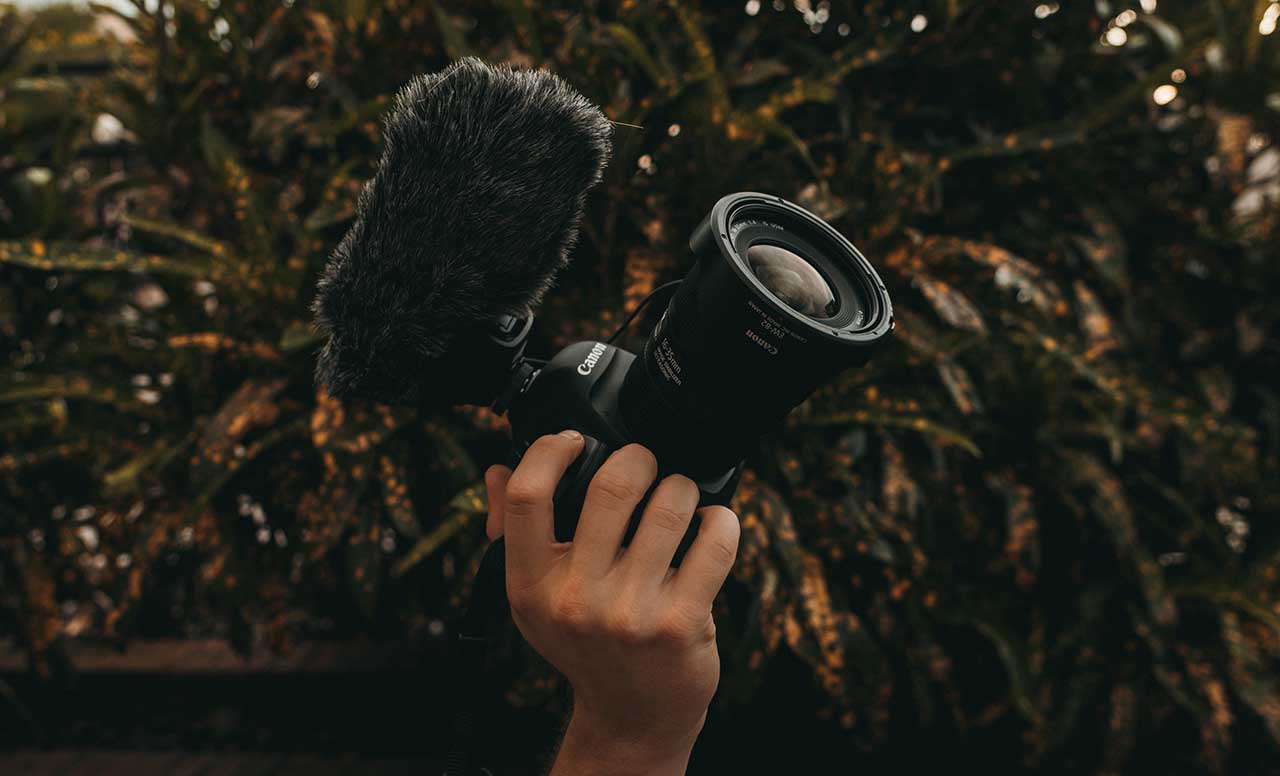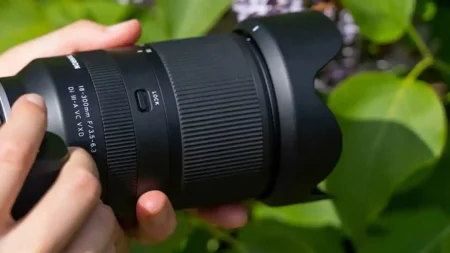Let’s be frank: audio is the most important element of your video. Get your focus slightly wrong in a couple scenes? Don’t worry, your viewers will forgive you. But if your audio is too muffled, too loud, too tinny or fades in and out, your viewers will give up on you. The built-in microphones on your camera are good for short clips on holiday, but they have their limitations and should really be your last resort for recording audio when shooting a video. For more professional audio in your videos you’ll want an external device. In this guide we round up our picks for the best external microphones for your camera when shooting video.
Why use an external microphone?
The built-in microphones on your camera are overly sensitive. They’ll pick up the sounds of your lens and internal camera components. They’ll pick up excess background noise, and wind can also overpower them.
External microphones, on the other hand, are designed to restrict background noises and pick up more sound from specific areas within a range. They also handle wind noise much more effectively, especially if used with a windjammer covering, often called a dead cat.
Click here to learn more about recording audio for video and what types of external microphones you need for different jobs.
What are the best external microphones for video?
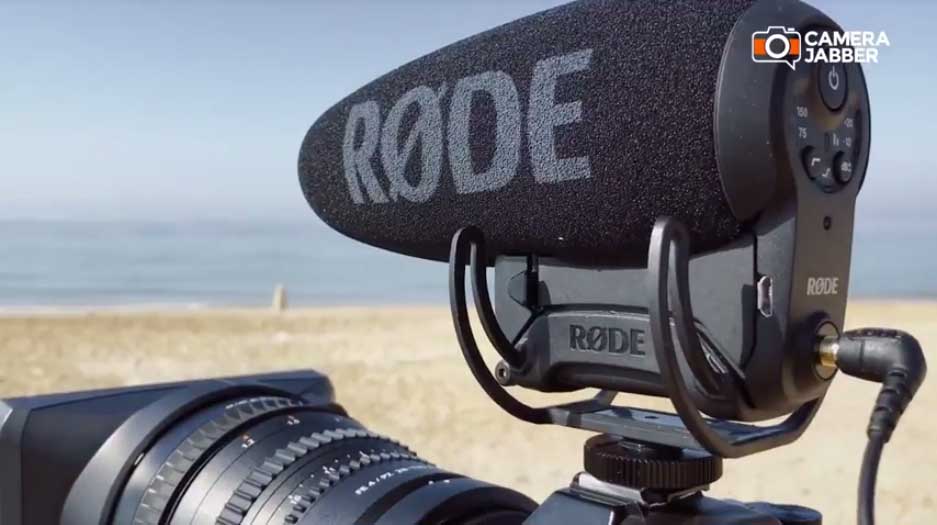
Rode VideoMic Pro+
As a uni-directional shotgun style mic, the Rode VideoMic Pro+ designed to pick up audio directly in front and the levels adjustment enables you to tailor the sensitivity based on the ambient noise and closeness of the presenter.
Setup is quick. Slip the Rode VideoMic Pro+ into your camera’s hot-shoe, plug it in and power it up. You can then fine tune its audio inputs with three sensitivity / level settings and three high pass options.
If you’re making the leap into videography, built-in high pass filters enable the fast removal of background audio, which further draws out the level of the principal audio and enriches the clarity.
The difference the Rode VideoMic Pro+ makes to your video’s sound is marked, especially when it comes to camera presentation. Audio is reproduced with far better clarity, less background noise and, overall, it’s just far more rich.
As more and more stills photographers are being asked to shoot video, the Rode VideoMic Pro+ presents a high-quality, no-fuss audio solution that allows one to work quickly.
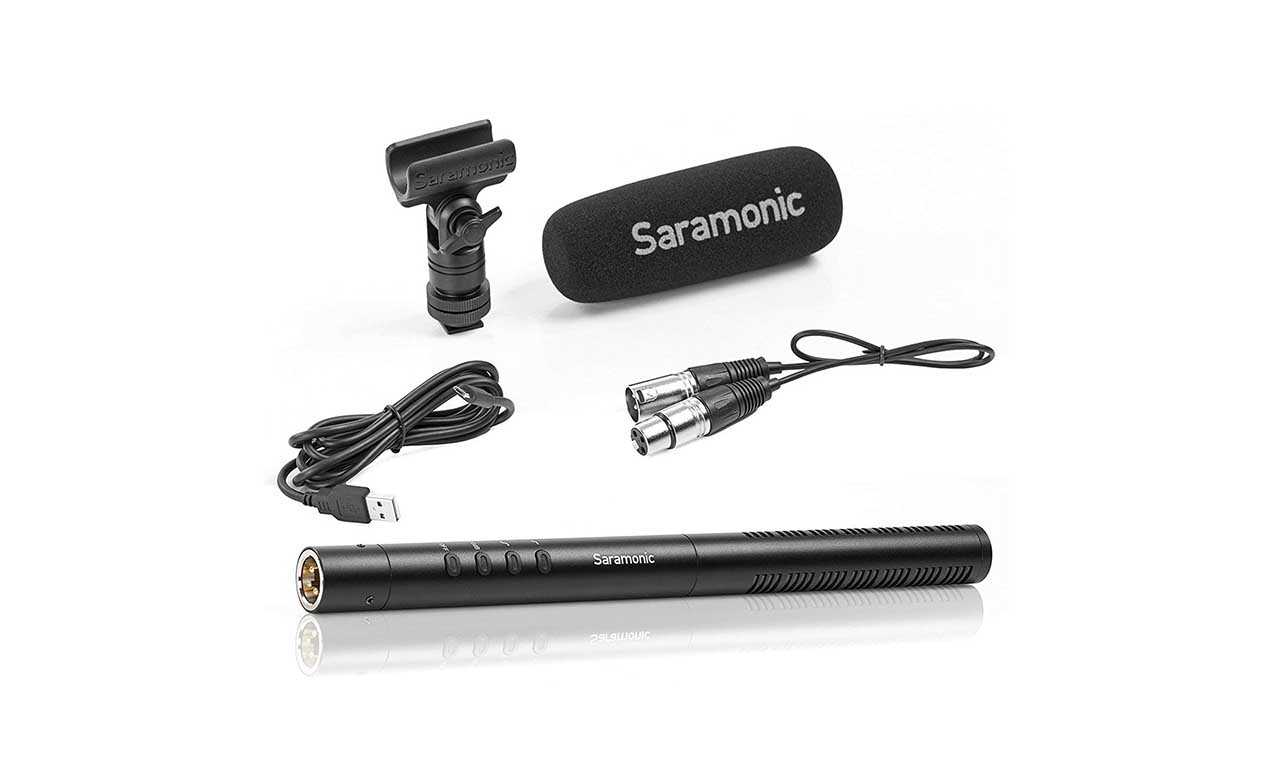
Saramonic SRTM1
The Saramonic SRTM1 is a mid-range directional shotgun microphone featuring a Cardioid polar pattern, with frequency range 40-20k Hz.
Designed for DSLR videographers and film production, the Saramonic SRTM1 offers a 150Hz HPF low cut switch, +6dB high frequency boost, and -10dB Pad.
Other features include a built-in lithium battery which Kenro claims lasts for about 150 hours of use and can be charged via USB.
What’s more, a High Pass Filter reduces low frequency and infrasonic rumble from HVAC systems and ambient sound, while the -10dB Pad attenuates microphone input for recording loud sounds without clipping, Kenro says.
The High Frequency Boost restores some of the high frequency content that is lost when a blimp or windshield is placed over the microphone, to improve the clarity of speech.
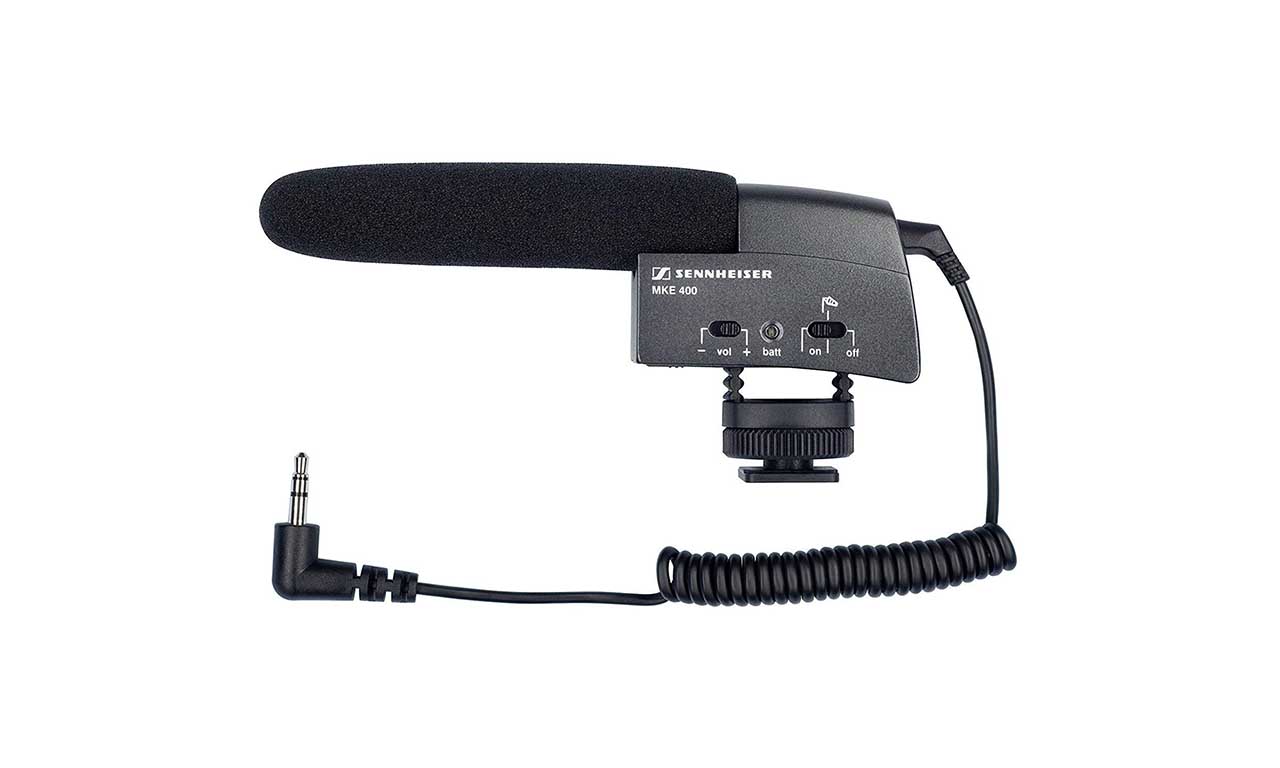
Sennheiser MKE 400
Sennheiser has been making quality audio equipment for years, and the MKE 400 offers professional-sounding audio in a compact size without breaking the bank.
Sennheiser promises up to a whopping 300 hours record time from the single AAA battery that powers the MKE 400, and its all-metal housing means it’s very robust. What’s more, it weighs just 59g.
There’s also a switchable wind noise filter, plus a handy XLR adaptor.
The MKE 400 delivers a frequency response from 40Hz to 20,000Hz, and is perfect for interview-style videography, as it’s designed to reject any side noise and pick up sound from directly in front.
If you’re looking for a compact and lightweight microphone, the Sennheiser MKE 400 offers some of the best audio quality available.
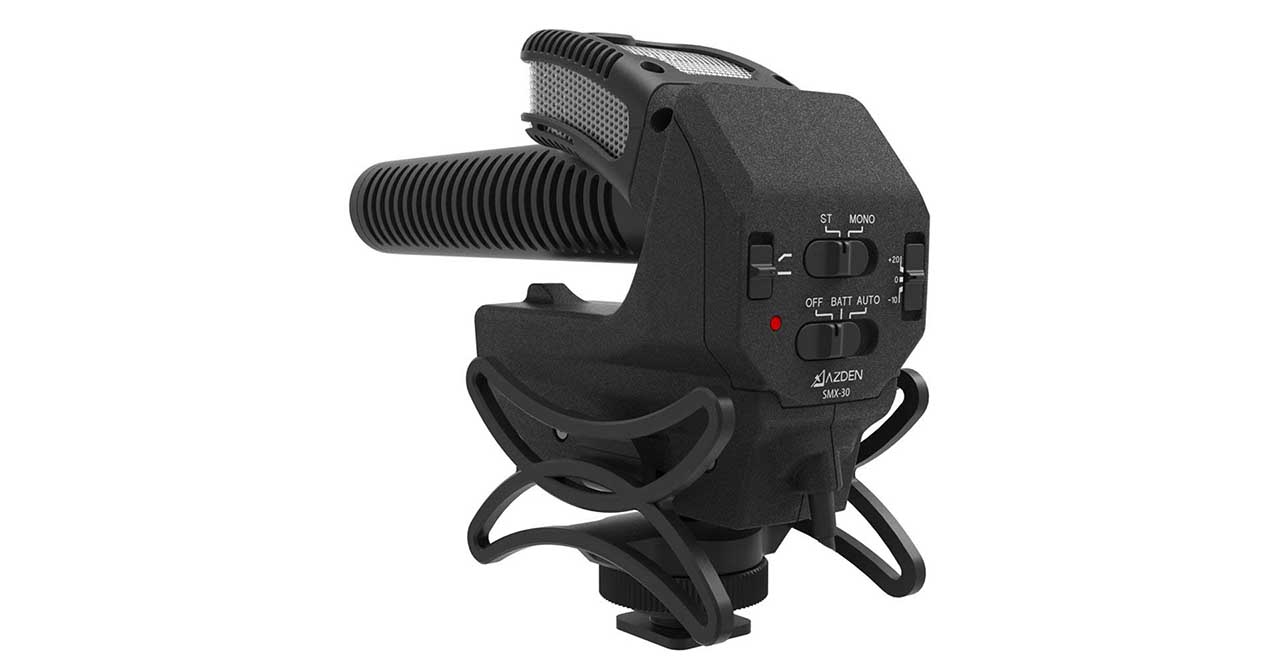
Azden AZ SMX-30
Azden’s novel SMX-30 is actually two microphones in one and offers users the choice of switching between mono or stereo. The stereo mic sits on top of the unit and boasts two cardioid polar pattern microphone elements.
The mono mic uses a super-cardioid polar pattern to capture high-quality sound from in front of the camera.
Other features include a +20dB gain booster, as well as a -10dB control to help prevent distortion when filming in loud environments.
A low-cut filter also helps reduce the sound of low frequencies, such as wind.
Small and lightweight, the SMX-30 slots well in your camera bag.
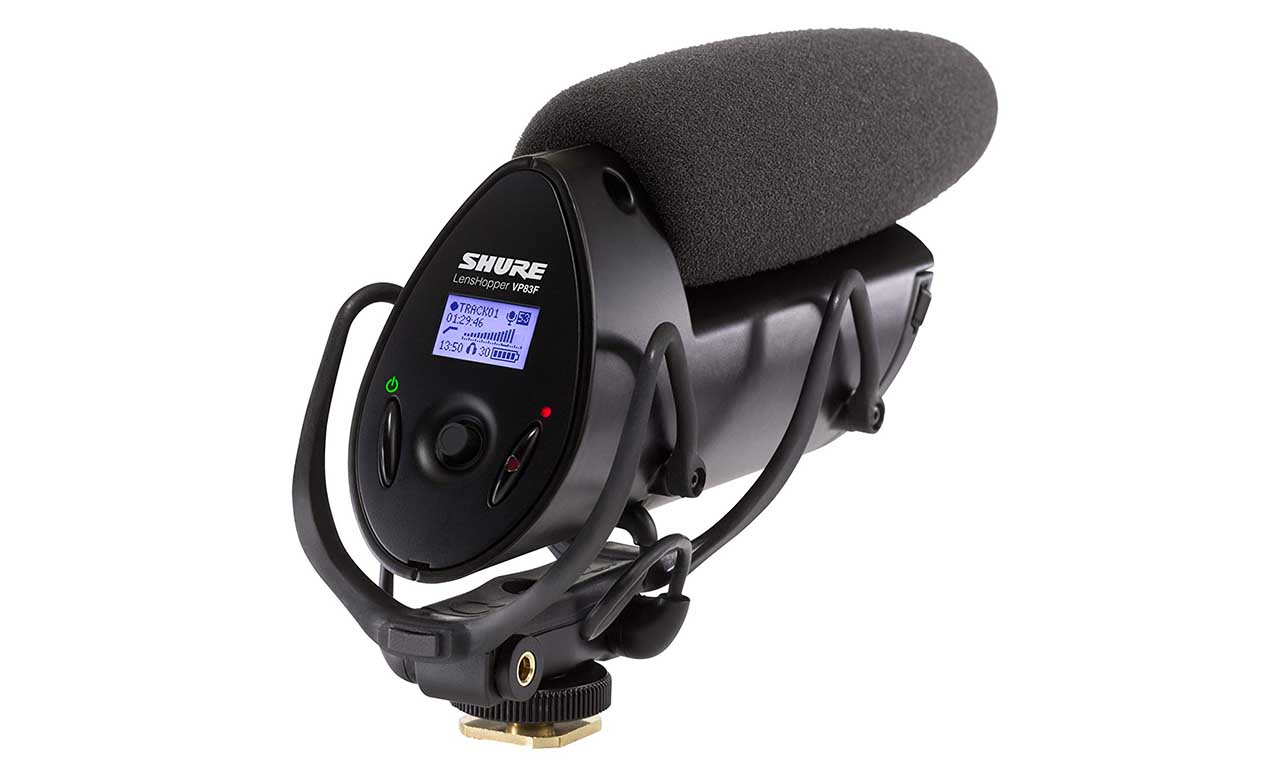
Shure VP83F LensHopper
Shure’s LensHopper is a compact condenser shotgun mic that has a number of interesting features. First is the VP83F’s backlit LCD screen for monitoring audio and battery metering, track information and remaining recording time. There are also a number of direct controls for one-touch recording.
The LensHopper offers integrated digital flash recording and it also boasts different sensitivity settings you can apply depending on where you’re using it.
Signal-to-noise ratio is excellent, and the Shure VP83F can record uncompressed WAV files at a 24-bit/48kHz sampling rate. Other features include switchable gain settings (up to 60 dB in 1 dB increments), a low-cut filter, shoe mount and windscreen.
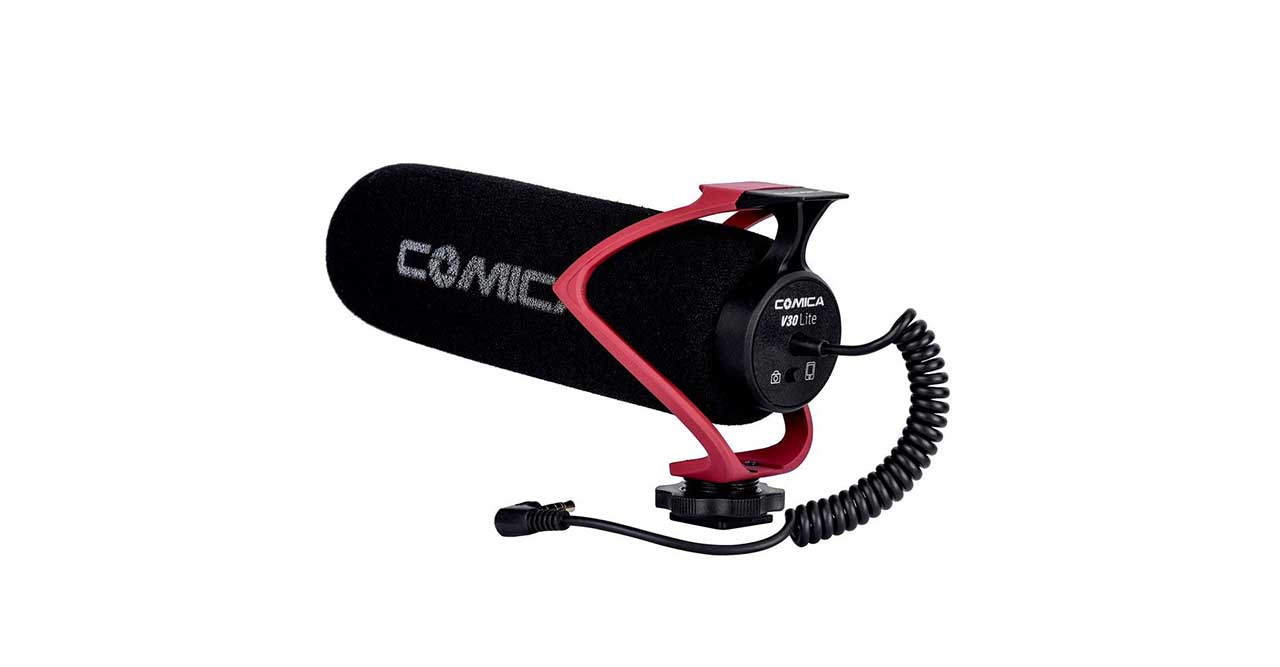
Comica CVM-V30 LITE
At the budget end of the market is Comica’s super-cardioid shotgun mic which you can use both on your camera or your smartphone (there’s a switch on the back for switching between camera or smartphone modes).
The CVM-V30’s super-cardioid polar pattern does a good job of restricting unwanted ambient noise in the background and promises a frequency range of 40Hz to 20,000Hz.
For the price, too, you get a shock-absorbing hotshoe mount, a wind restrictor and some nice design touches, such as a 1/4-inch screw thread underneath the hotshoe mount.
Is this the best external microphone for your camera? No, it’s not. The Comica mic isn’t going to deliver the same audio quality as, say, the Rode or Sennheiser options on our ‘best external microphones’ list.
But if you’re just dipping your toe into video, it’s a user-friendly, cost-effective option you can learn with and expect decent quality results (certainly way better than your camera’s on-board mics).
For vlogging and simple pieces to camera, the Comica CVM-V30 is a great performer, lightweight to carry around and doesn’t require batteries.
